Front page frenzy: From Frankenfood to Covid-19
ANALYSIS: Britain’s Science Media Centre founder tracks two decades of scandals.
'Beyond the Hype: Inside science’s biggest media scandals from Climategate to Covid', by Fiona Fox.
ANALYSIS: Britain’s Science Media Centre founder tracks two decades of scandals.
'Beyond the Hype: Inside science’s biggest media scandals from Climategate to Covid', by Fiona Fox.
When President Donald Trump, in his second inaugural address last January, mistakenly credited Americans with splitting the atom, the reaction of shocked New Zealanders was immediate.
In 1917, the Nelson-educated colonial scientist Ernest Rutherford, then at the University of Manchester, performed the first artificial nuclear reaction. He bombarded nitrogen gas with alpha particles and observed the emission of a proton.
This experiment effectively transformed nitrogen into oxygen, marking the first time an element was deliberately transmuted into another. This groundbreaking work laid the foundation for nuclear physics and eventually led to the development of nuclear energy and atomic weapons.
Yet when faced with the realities of modern science, including the need to decarbonise, many New Zealanders remain wilfully ignorant and fear anything associated with emissions-free nuclear energy as a solution.
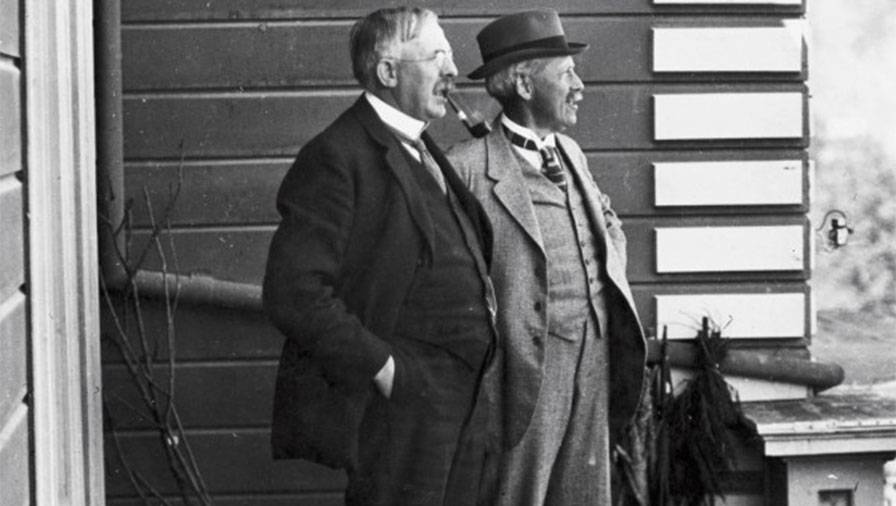
Ernest Rutherford, left, and JJ Thomson at the Cavendish Laboratory in the 1930s.
Initially, Rutherford’s legacy pointed to New Zealand as a potential leader in nuclear science. When I was growing up in Nelson in the 1950s and 1960s, people were positive about its benefits. There was talk of mining for uranium deposits in the Buller district, plans for nuclear power stations, and the use of radium in medicine.
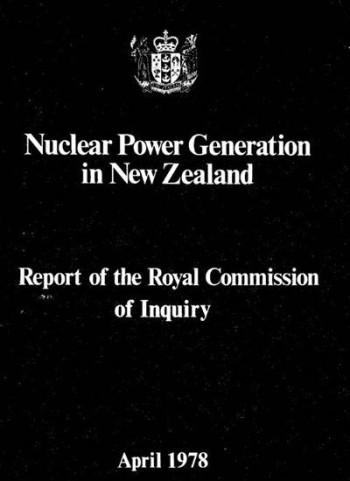
That changed with public opposition to nuclear testing in the Pacific and the sinking of the Rainbow Warrior by French agents in 1985. That spread to exaggerated claims about the dangers of radiation from nuclear-powered ships.
If hospitals wanted to use radiation for cancer treatment, diagnostics and research, it was kept out of the public eye. A recent news story about the storage of radioactive waste revealed that its relocation to a new facility was treated as a matter of national security, and therefore kept secret.
The 1978 Royal Commission on Nuclear Power Generation noted the lack of independent sources of critical analysis over a wide area of security and energy policies. It also recorded the failure of the media to understand the issues.
Specifically, the commission expressed “disappointment about the participation of the news media‟, which it said was “intermittent and unsophisticated” and “inclined to give prominence to the views of some witnesses rather to the better-balanced evidence of more knowledgeable people”.
One televised item reported the concerns of a neighbouring property owner who did not know the purpose of a radioactive waste storage facility on New Zealand Defence land. But no one explained the levels of danger or risk.
Scientists have endeavoured to shift this under-the-carpet approach. The then director of the country’s radiological laboratory, Andrew McEwan, wrote Nuclear New Zealand: Sorting fact from fiction in 2004. Nothing like it has appeared since.
The problem of the public’s scientific ignorance is not unique to New Zealand. In the recent Australian election, the Liberals raised nuclear power as an issue and were soundly defeated.
This was a blow to efforts to inform the public through the media, particularly in light of the Covid-19 pandemic. The first Science Media Centre was established in the UK in 2002 after a House of Lords inquiry into public trust in science due to controversies such as BSE (mad cow disease), genetically modified (GE) foods, and the MMR vaccine scare.
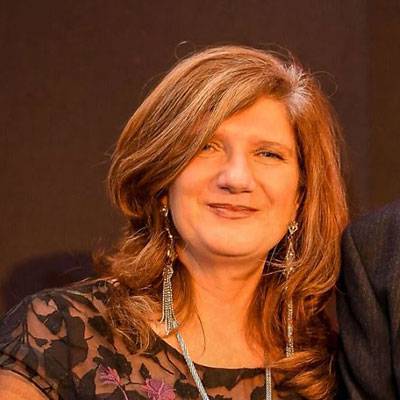
Fiona Fox.
Its founding director, Fiona Fox, has written the history of its first two decades, Beyond the Hype: Inside science’s biggest media scandals from Climategate to Covid. It’s a racy insider’s account, with plenty of good advice to politicians, policy advisers, business owners, and anyone involved in communication.
As the subtitle suggests, it covers key British experiences of how the media handled GM food (“Frankenfoods”), use of animals in research, the Climategate emails, human-animal hybrid research (stem cells), cures for myalgic encephalomyelitis (chronic fatigue syndrome), and the Covid-19 pandemic.
Along the way, we also learn about the deadly poisons deployed by Russian agents, the impact of a tsunami on the Fukushima nuclear power station, the sacking of Professor David Nutt for his views on illegal drugs, Sir Tim Hunt’s sexist comments on female researchers, and Iceland’s volcanic ash.
Fox began her career in communications, not journalism or science, and initially spent seven years at the Catholic Agency for Overseas Development. But her radical political ideas did not suit the religion’s opposition to contraception, abortion, IVF (in vitro fertilisation), and embryo research.
The idea for an independent organisation to advise the media on scientific matters came from Professor Susan Greenfield, a neuroscientist and director of the Royal Institution, founded in 1799 to engage in scientific education and research. Lord Rutherford was the third of its Nobel laureates (for chemistry in 1908).
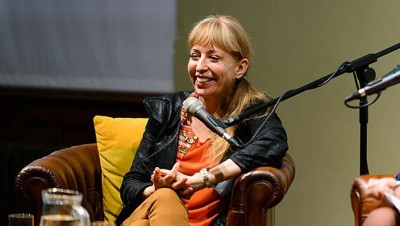
Baroness Susan Greenfield.
Later appointed by then Prime Minister Tony Blair to the House of Lords, Baroness Greenfield has been an enthusiastic contributor to public debate on mental health. She believed the only solution to the media’s tendency to sensationalise or give equal weight to fringe views, leading to public confusion, was for scientists to engage more directly with the media and public.
The model proved so successful that it encouraged the establishment of similar centres in New Zealand (2008), Australia (2005), Canada (2008) and Japan. The New Zealand version follows the principle that “the media will do science better when scientists do the media better”. This is achieved through providing rapid expert responses to breaking news from a list of committed scientists; pre-preparing expert commentary on embargoed studies or policy reports; and creating contextual documents by scientists and journalists to guide accurate reporting.
In the past week, the New Zealand centre posted expert reactions on the Air India crash at Ahmedabad, alongside articles on the maths gender gap, the misuse of menstrual tracking data, and the strategy to be predator-free by 2050.
The first shows the need to act in the first hours of a breaking news event. It’s my personal observation that the New Zealand centre’s profile has declined since its early days when it was launched by the Royal Society of New Zealand with Peter Griffin at its head. The Royal Society itself has lost credibility with many scientists due to its endorsement of decolonisation.
Unlike in the UK, where dozens of reporters continue to cover science, the environment and medical topics for both the mass and specialist media, New Zealand’s equivalents have dwindled to a handful. And unlike Fox’s stringent advice to the contrary, the “health” round is now largely covered by political reporters focused on the conflict between demands for more funding and the Government trying to keep a lid on burgeoning costs.
Science, Fox says, “does not lend itself to the clear single messaging that the government favours. It’s messy and complex, and preliminary and contradictory”. Incidentally, Fox was interviewed in 2014 by New Zealand journalist Paul Gorman, for his book Portacom City (2017), on how governments and the public service in both countries gagged their scientists from making comments to the media.
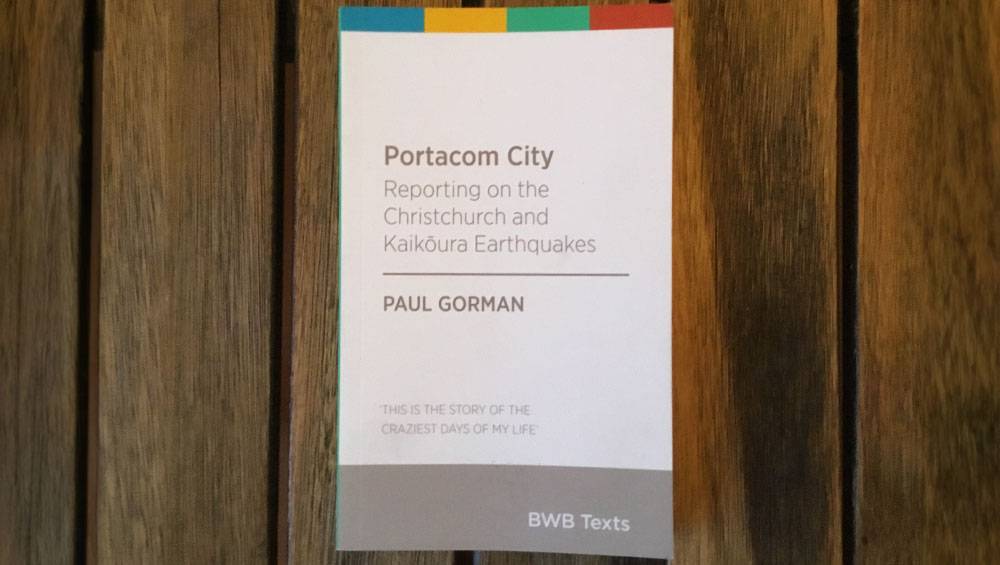
Portacom City by Paul Gorman.
The Covid-19 virus was an example of knowledge advancing in an ad hoc fashion, with views and actions changing according to the scientific method. By contrast, governments want to speak with a united voice to reassure the public. “I wanted politicians to acknowledge that there is a difference between science on the one hand and government decisions and messaging on the other,” Fox states.
Her hopes were dashed as scientific announcements were subject to spin by political communicators, and the data that justified them were withheld. One example of jumping to conclusions is epidemiological modelling, which is notoriously unreliable as a predictor of the future (as explained by Shaun Hendy in The Covid Experience).
Fox despairs at the daily Covid briefings where politics trumped science. “It seemed that many of the questions were only being asked in order to skewer the politicians, particularly trying to catch them out whenever there was a change in policy." She found herself yelling at the TV: "Maybe because the evidence has changed!”
She further laments the reaction of ministers to hire more communicators to avoid answering questions that could get them into trouble, while the scientists themselves were put off doing media work.
Despite these concerns, Fox is positive that editors appreciated the importance of science ‘explainers’ during the pandemic, and that readers wanted serious, in-depth expert reporting and analysis they could trust and couldn’t get anywhere else.
She concludes that a role still exists for science media centres on the basis that editors accept the value of specialist reporters, while senior scientists are aware that talking to the media is an integral part of their role.
Perhaps some comfort will come from the radioactive waste storage story being seen as part of reality, rather than an attempt to inflate New Zealanders’ fear of anything nuclear.
Beyond the Hype: Inside science’s biggest media scandals from Climategate to Covid, by Fiona Fox (Elliott & Thompson).
Nevil Gibson is a former editor at large for NBR. He has contributed film and book reviews to various publications.
This is supplied content and not paid for by NBR.
Sign up to get the latest stories and insights delivered to your inbox – free, every day.